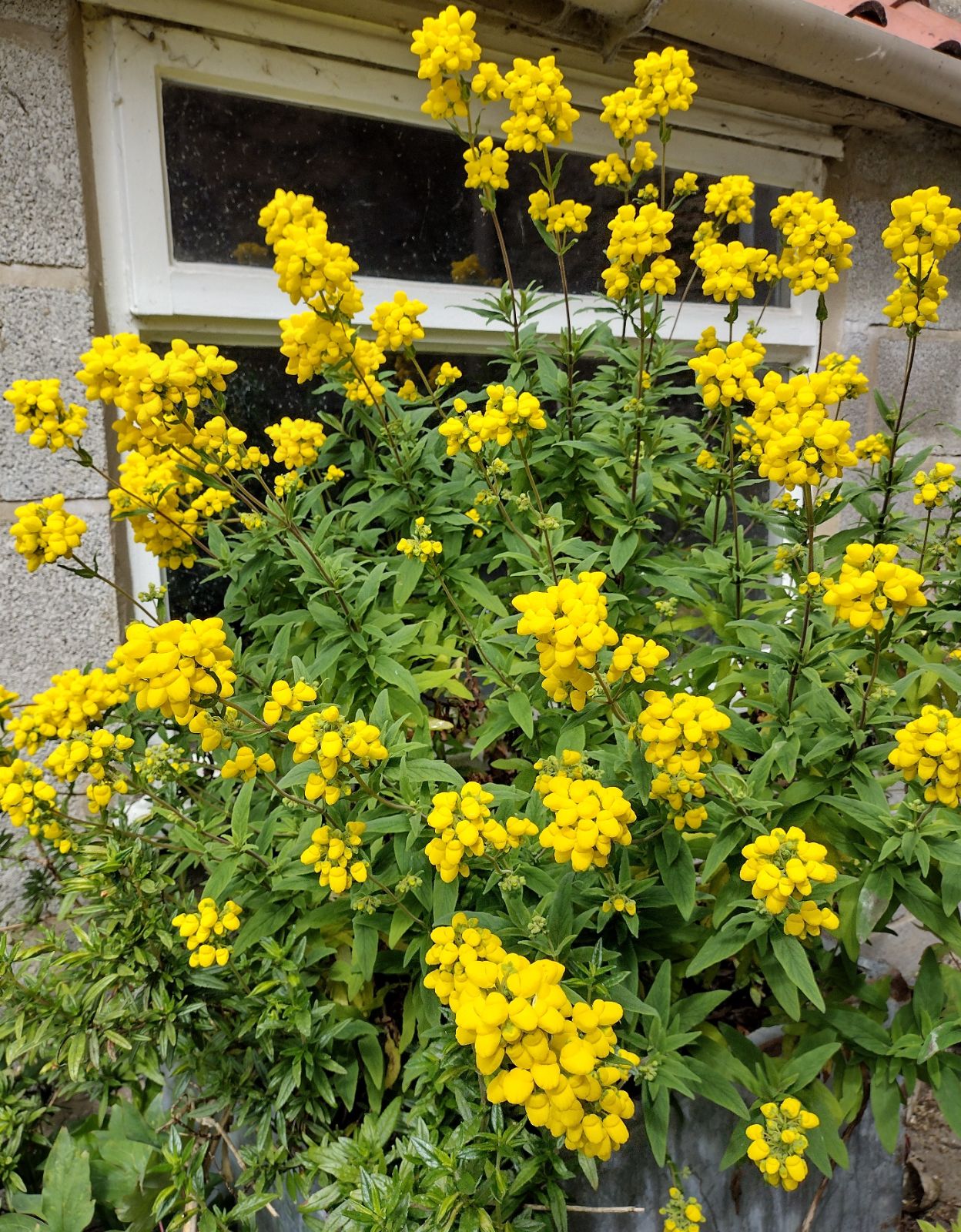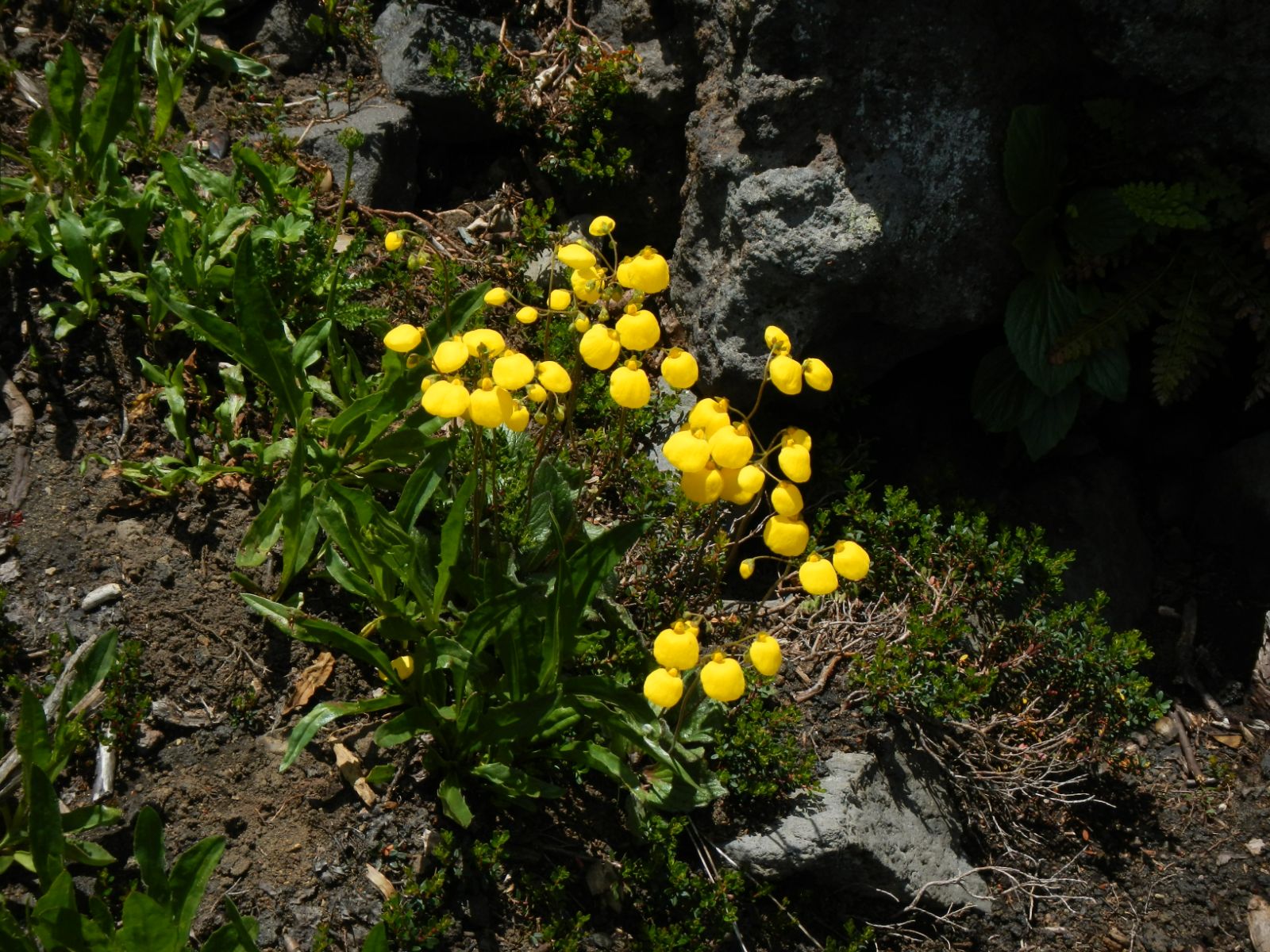Calceolaria integrifolia
Credits
Article from Bean's Trees and Shrubs Hardy in the British Isles
Recommended citation
'Calceolaria integrifolia' from the website Trees and Shrubs Online (treesandshrubsonline.
Genus
Synonyms
- C. rugosa Ruiz & Pavon
Other taxa in genus
An erect evergreen shrub of bushy habit, 4 ft high; young shoots semi-woody, clothed with a close velvety down. Leaves opposite, sage-like, oblong-ovate, tapered towards both ends, bluntish at the apex, minutely toothed; 2 to 31⁄2 in. long, 3⁄4 to 11⁄2 in. wide; dull green and wrinkled above, with a soft, close, greyish felt beneath; stalkless. Flowers about 1⁄2 in. wide, with the characteristic ‘pouch’ of the genus, bright yellow, produced abundantly during the summer months in successive tiers on terminal corymbs that are 3 to 5 in. high, not so much wide. Calyx four-lobed, the lobes ovate, 1⁄8 in. long, felted like the slender flower-stalk. The inflorescence is borne on a clear stalk that is sometimes 6 to 9 in. long. Bot. Mag., t. 2523.
Native of Chile; introduced in 1822 by the Horticultural Society. In most parts of the country this calceolaria needs protection, but in the south-western counties succeeds very well in the open ground, making there a very gay and attractive shrub. Near London it may be grown against a sunny wall, especially if covered with bracken or brushwood during severe frost. It likes a good, well-drained, loamy soil and is easily increased by cuttings in summer. Judging by wild specimens, it is very variable in leaf and flower; the description given above represents the form commonly grown in this country. Some are much more coarsely toothed, and one with narrower, smaller leaves is called var. angustifolia Lindl.


